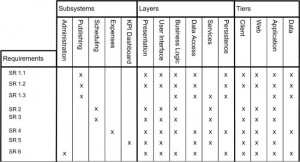niko-niko
While I was at the recent Agile Leadership Network (ALN) event earlier this month, Dave Nicolette presented a talk on metrics. I'll admit, I'm fascinated by metrics. I remember working on the NIH Executive Dashboard and then the NCI Dashboard between 2004 and 2007 . But since then, I've grown to look at metrics differently. Though I've taken steps to ask myself questions to ensure my metrics are worth something, I've seen the Hawthorne Effect in action and it made me question how metrics can be easily manipulated. Don't you hate it when you're trying to measure team performance and then they start acting all crazy due to upcoming dates like the end of the sprint or the end of a deployment cycle? I've seen developers start to rush. Risk goes up and quality can go down, just to try and maintain a velocity. Well, Dave showed a slide in his metrics presentation that really hit home for me. It's called the Niko-Niko (mood) Calendar. Let's say your position in the company is to ensure customer satisfaction. A useful unit of measure would be NPS (Net Promoter Score). Think of it as a customer satisfaction or “happiness” metric. NPS is based on the fundamental perspective that every company’s customers can be divided into three categories: Detractors, Passives, and Promoters. By asking one simple question — How likely are you to recommend [Company X] to a colleague or friend? — you can track these groups and get a clear measure of company performance through its customers’ eyes. I've written about it before in a post titled Outdated Success Criteria.
That's all fine and good but what if your position in the company is to ensure employee satisfaction? As a manager or a leader you should be working to keep your employees happy. How would you measure their happiness? You could use a Niko-Niko calendar. Each individual on a team should identify their daily mood in one of three ways: happy, indifferent, or unhappy. Because I keep a daily journal of what I do, I recreated a calendar to see if there were any trends. Do you see any? Can you see the the days I was working at my other job and I was dreading a particular meeting? Can you see the days I spoke to LitheSpeed or when I was hired by LitheSpeed? Though you can't make everyone on your team happy, as a manager or servant-leader, you should be creating an environment that will, in the end, make them happier and more productive. If everyone on the team maintained a mood calendar, a manager or leader could take action before negative feelings become caustic to a team.







 Things seemed to get a little heated in the meeting yesterday. Upon reviewing the vendor-supplied PowerPoint deck, we noticed graphs illustrating the quantity of
Things seemed to get a little heated in the meeting yesterday. Upon reviewing the vendor-supplied PowerPoint deck, we noticed graphs illustrating the quantity of 
